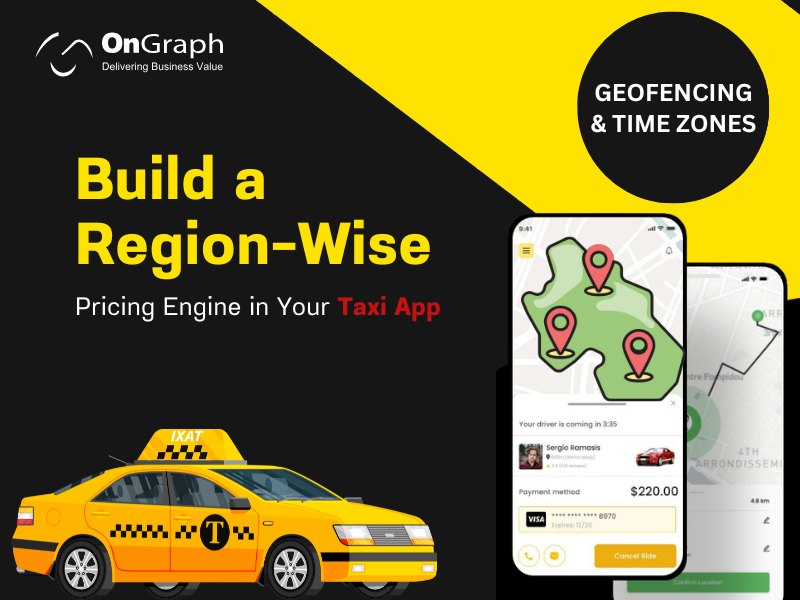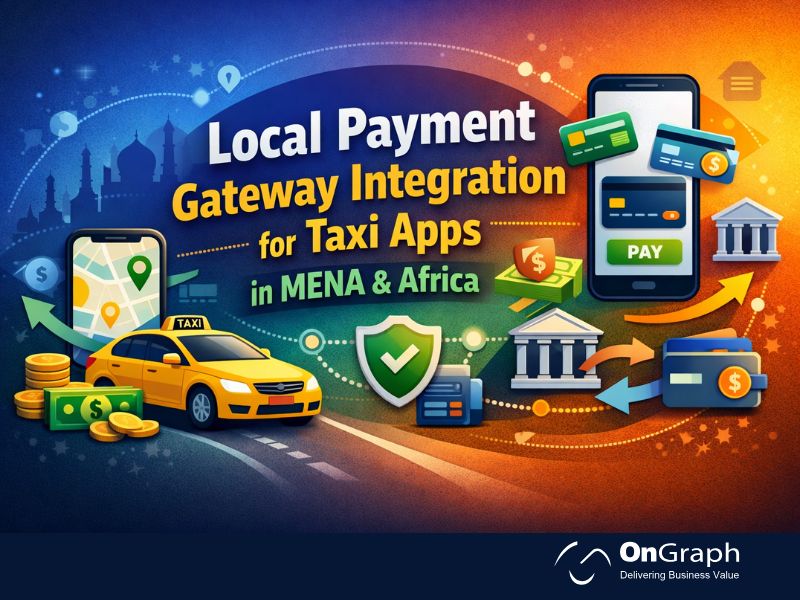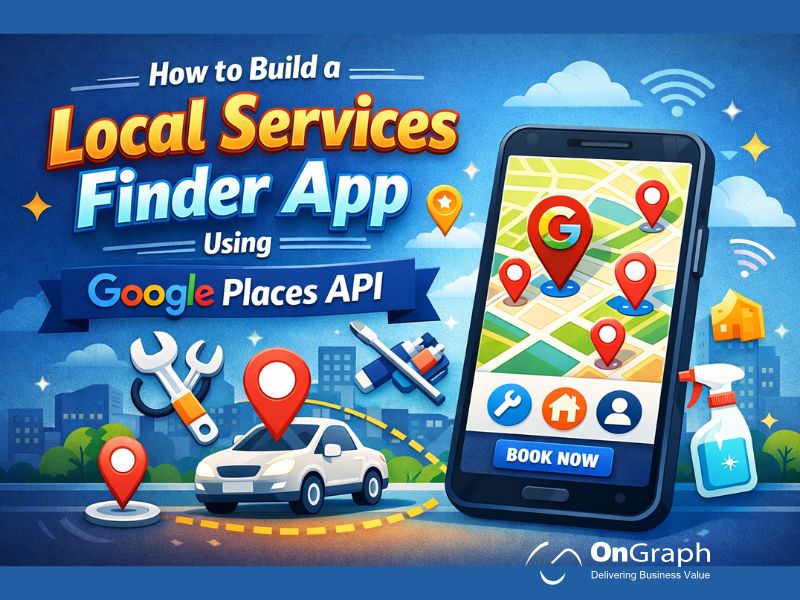In today’s competitive mobility industry, building a successful taxi app requires more than just connecting drivers and passengers. One of the most overlooked but crucial features is a Region-Wise Pricing Engine in Your Taxi App. Whether you’re expanding across cities or launching a new ride service in tiered regions, location-based fare rules and time-sensitive pricing models are critical for operational efficiency and user trust.
This guide explains how to implement a region-specific pricing engine with geofencing, time zones, and demand-based logic to enhance your taxi booking app development strategy.
Why You Need a Region-Wise Pricing Model?
When you launch a ride-hailing app across multiple cities or countries, you’ll face variations in:
- Fuel costs
- Driver availability
- City tier classification (e.g., metro vs. tier-3 towns)
- Time zone differences affecting peak hours
- Local taxes and tolls
If your pricing engine is not flexible by region, your business risks overcharging or undercharging passengers—leading to churn, poor ratings, and profit leakage.
Key Elements of a Region-Wise Pricing Engine
A robust pricing engine in any taxi mobile app development project should include the following features:
1. Geofencing-Based Region Setup
Geofencing allows you to define virtual perimeters (boundaries) on a map. For each region (e.g., Nairobi, Delhi, London), you can apply unique pricing logic.
Example:
- In Nairobi CBD, set a base fare of $2, whereas for the outskirts, set it at $1.5.
- Only apply surge pricing during weekends in city centers.
2. Region-Specific Fare Rules
Define pricing per region using:
- Base Fare
- Minimum Distance
- Per-Kilometer Fare
- Per-Minute Wait Charges
- Cancellation Fees
Each region can have a unique pricing formula tailored to market expectations and operating costs.
3. Time Zone Alignment
Taxi apps operating across countries must consider time zone differences for peak/off-peak pricing. If your backend is set to UTC but your riders are in Dubai or Singapore, your surge pricing won’t align with local demand.
Sync your time-based rules with the user’s local time zone using the region configuration logic.
4. Surge Pricing by Region & Time
Set dynamic rules such as:
- “Apply a 15% fare increase between 7–10 AM and 5–8 PM on weekdays in city regions.”
- “Enable surge if more than 20 active bookings are registered in the zone.”
This helps manage demand and driver availability intelligently.
Also read- Taxi App Development Cost in 2025: Full Budget Guide
Step-by-Step Implementation Guide
Step 1: Define Regions in Admin Panel
Allow admin users to draw or import regional boundaries on a map. Tools like Google Maps API or Mapbox can help define exact service zones.
Each region should have:
- A name
- Time zone
- Status (Active/Inactive)
- Geo-coordinates
Step 2: Create Fare Structures by Region
Within each region, define:
- Vehicle categories (e.g., Sedan, SUV)
- Fare rules
- Supported payment modes (Wallet, Cash, Card)
You can link different services to different regions based on operational feasibility.
Step 3: Assign Drivers to Regions
Ensure that each driver is assigned a base region (and possibly multiple secondary regions). This allows better routing and compliance with local fare rules.
Step 4: Monitor and Adjust
Your admin panel should offer reporting to monitor:
- Ride volume per region
- Revenue per city
- Average fare per ride
- Region-wise complaints or cancellations
Boost Revenue with Smart Pricing – Let’s Build Your Taxi App!
Case Study: How Region-Wise Pricing Boosted Profitability
A ride-hailing startup operating in India and the UK implemented region-based pricing after noticing high ride cancellations during peak hours in tier-1 cities. They enabled:
- Higher cancellation charges in metros
- Geo-restricted service zones
- Peak time surges in local time zones
Within 6 months, they reported:
- 22% increase in ride completions
- 17% higher earnings per ride
- Reduced customer complaints by 35%
Top Benefits for Your Taxi Business
Scalability: Expand across cities without hardcoding fare logic.
Profit Optimization: Adjust pricing as per cost of living or traffic intensity.
Better Driver Allocation: Assign drivers based on fare potential and demand.
Customer Trust: Show fare transparency based on city-specific pricing.
How does It Fit with Your Taxi App Tech Stack?
If you’re planning a full-stack solution with a taxi booking app development company, ensure the architecture supports:
- Modular pricing engine
- Real-time geolocation
- Dynamic fare computation
- Wallet and cash payment support
- Multi-region time zone handling
This is essential whether you’re building with Flutter, React Native, or native Android/iOS.
Important Considerations
- Compliance: Some regions require regulated fare slabs.
- Localization: Currency, units (KM vs miles), and language must adapt.
- Payments: Some countries prefer cash, others mandate card or in-app wallets.
If you plan to launch a scalable taxi App, region-based adaptability isn’t optional—it’s essential.
Final Thoughts
Incorporating a Region-Wise Pricing Engine in Your Taxi App is not just a smart feature—it’s a necessity for global or multi-city ride hailing businesses. Whether you are starting fresh or scaling your taxi platform, this logic allows you to customize for cost, customer behavior, and city-level demand patterns without rewriting your core code.
For companies looking to overcome taxi app deployment challenges or considering long-term success strategies outlined in the evolution of taxi apps, region-based pricing offers both flexibility and control.
Want a Smarter Taxi App? We’ve Got the Tech!
From dynamic pricing to geo-based fares, we build feature-rich apps that drive growth and efficiency. Let’s get started!
FAQs
A region-wise pricing engine is a backend system in a taxi app that allows you to define different fare rules for different cities, zones, or countries. It lets you adjust base fare, per kilometer cost, waiting time, and other charges based on the selected region. This is useful for companies operating in multiple locations where travel behavior, traffic patterns, and service costs vary.
Geofencing lets you draw a virtual boundary on the map (e.g., a city or district). When a user or driver is inside this area, the app can automatically apply specific fare rules, peak-time surges, or service restrictions. This ensures that each location has relevant pricing and improves fare transparency for both riders and drivers.
Yes. If your taxi app operates in different countries or time zones, the system can sync pricing rules with the local time zone of each region. This is especially useful for setting time-based pricing like morning/evening peak hour surcharges, weekend rates, or public holiday pricing.
Absolutely. A flexible pricing engine allows you to configure region-wise payment preferences—such as cash-only in rural areas, wallet and card in urban zones, or even corporate billing in business districts. This ensures compliance with local habits and improves customer convenience.
Yes. You can configure the engine to enable surge pricing based on:
Time of day (e.g., 7–10 AM and 5–8 PM)
Days of the week (e.g., weekends only)
Number of ride requests in a region (e.g., surge when 20+ bookings are placed in a 15-minute window)
This helps maintain service quality and incentivizes drivers to be active during high-demand periods.
Adding a region-based pricing engine adds some complexity to your app. Depending on the number of regions, geofencing setup, and pricing flexibility required, it can increase development cost by $1,500 to $3,000. However, this investment is worthwhile as it allows for scalability, better revenue control, and localization—key to long-term growth in ride-hailing businesses.
About the Author
Let’s Create Something Great Together!
Latest Blog
















